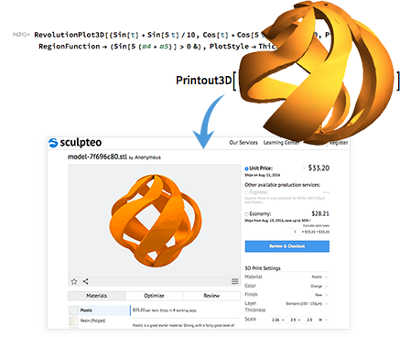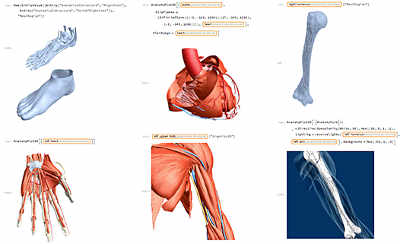| Wolfram Mathematica 11 |
| Written by Kay Ewbank | |||
| Thursday, 11 August 2016 | |||
|
The latest version of Mathematica and the Wolfram language have been released with 555 new functions, support for 3D printing, more for machine learning and neural networks, and even data on Pokemon. For traditional users there are improvements in calculus. The Wolfram language was made available for writing code as a separate entity alongside the previous version of Mathematica, and has been the focus of much of the attention in this current release. One obvious addition to this release is support for 3D printing. Previous versions of Mathematica let you export to STL, but this new version has a complete pipeline that goes from creating 3D geometry to having it printed on your 3D printer. Writing about the new facility on the Wolfram blog, Mathematica inventor Stephen Wolfram said: "Often in the past I’ve wanted to take a 3D plot and just make a 3D print of it. And occasionally I’ve been lucky, and it’s been easy to do. But most of the time it’s a fiddly, complicated process. Because graphics that display on the screen don’t necessarily correspond to geometry that can actually be printed on a 3D printer. And it turns out to be a difficult problem of 3D computational geometry to conveniently set up or repair the geometry so it really works on a 3D printer." The new facility in version 11 lets you take any 3D plot and 3D print it. Another addition to the new version is in the area of machine learning and neural networks. Version 10 added automated core functions for learning by example, and Wolfram says many users have made use of them. Version 11 increases the support for machine learning, adding to the previous support for classification and prediction with new functions for feature extraction, dimension reduction, and clustering, and including pre-trained machine-learning functions. The support for neural networks has also been improved, with the inclusion of a streamlined symbolic way to set up and train neural networks in which, according to Wolfram, as much of what has to be done as possible has been automated. New functions for neural networks include NetGraph and NetChain, alongside neural net special functions such as DotPlusLayer and ConvolutionLayer. From the programming point of view, the Wolfram Language treats neural networks just as Graph objects like any other graph. Version 11 also introduces fully integrated support for audio processing, with the ability to handle audio directly in the Wolfram Language. Wolfram handles all the caching and streaming, and you just use a simple Audio object that can be worked on using all the signal processing and analysis that’s available in the Wolfram Language. New data sets are another area where there are additions. Version 11 contains detailed 3D anatomy models of the structures in the human body, and can be used in computations and plotted using new functions such as AnatomyPlot3D.
Other data areas that have been added are symbolic representations of food, and historical country data. Mathematica has in previous versions included data on countries in modern times, but this version adds border information for all country-like entities throughout recorded history. Also new in Version 11 are WeatherForecastData and MathematicalFunctionData, along (naturally) with data on Pokémon. Alongside the additions to the language side there have been improvements to the more traditional Mathematica areas such as calculus. Stephen Wolfram says that: "back in earlier versions, what we’ve just added for calculus in Version 11 is big enough that it would have undoubtedly been the headline new feature of the version." Mathematica is now able to solve eigenvalue versions of both ODEs and PDEs. You just specify the equations and their boundary conditions, and the system automatically works out how to solve them. You can use the whole Wolfram Language geometry system and data to set up boundary conditions, so it's possible to find the eigenmodes of a “drum” of any shape. Version 11 also adds some new capabilities for general symbolic differential equations.The ability to solve integral equations is something mathematicians have wanted throughout Mathematica's history, and Wolfram says that version 11 introduces symbolic solutions to many classes of integro-differential equations. Other calculus improvements include the addition of Green’s functions for general equations in general domains, and Mellin transforms. Another improvement is MathematicalFunctionData. This gives you access to 100,000 properties and relations about mathematical functions. There are even more additions listed in the blog and release notes.
More InformationRelated ArticlesWolfram Language Cloud Launched Wolfram Language The Key To The Future? What To Call A Language - Mathematica Has a Problem Buy A Pi For $25 And Get Mathematica Free Free Sage Math Cloud - Python And Symbolic Math Wolfram Finance Platform Launched
To be informed about new articles on I Programmer, sign up for our weekly newsletter,subscribe to the RSS feed and follow us on, Twitter, Facebook, Google+ or Linkedin.
Comments
or email your comment to: comments@i-programmer.info |
|||
| Last Updated ( Thursday, 11 August 2016 ) |




